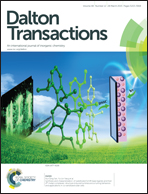On the gold–ligand covalency in linear [AuX2]− complexes
Abstract
Gold compounds, clusters, and nanoparticles are widely used as catalysts and therapeutic medicines; the interactions between gold and its ligands in these systems play important roles in their chemical properties and functionalities. In order to elucidate the nature of the chemical interactions between Au(I) and its ligands, herein we use several theoretical methods to study the chemical bonding in a variety of linear [AuX2]− complexes, where X = halogen atoms (F, Cl, Br, I, At and Uus), H, OH, SH, OCH3, SCH3, CN and SCN. It is shown that the most important bonding orbitals in these systems have significant contributions from the Au sd hybridized atomic orbitals. The ubiquitous linear or quasi-linear structures of [AuX2]− are attributed to the well-balanced optimal overlap in both σ and π bonding orbitals and minimal repulsion between the two negatively charged ligands. The stability of these complexes is related to the covalency of the Au–X bond and a periodic trend is found in the evolution of covalency along the halogen group ligands. The special stability of [Au(CN)2]− is a result of strong covalent and ionic interactions. For the superheavy element Uus, the covalency of Au–Uus is enhanced through the spin–orbit interactions.
![Graphical abstract: On the gold–ligand covalency in linear [AuX2]− complexes](/en/Image/Get?imageInfo.ImageType=GA&imageInfo.ImageIdentifier.ManuscriptID=C4DT04031G&imageInfo.ImageIdentifier.Year=2015)

 Please wait while we load your content...
Please wait while we load your content...